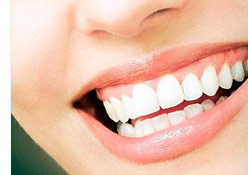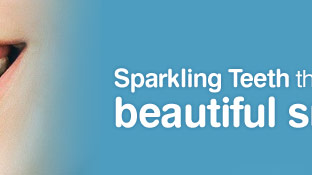About Toothpaste
Toothpaste is a paste or gel dentifrice used with a
toothbrush as an accessory to clean and maintain the aesthetics and health
of teeth. Toothpaste is used to promote oral hygiene. Salt and sodium
bicarbonate (baking soda) are among materials that can be substituted for
commercial toothpaste. Toothpaste is not intended to be swallowed, but is
generally not very harmful if accidentally swallowed in small amounts.
Toothpaste works in tandem with toothbrushing to clean teeth and remove
plaque bacteria specifically:
- Toothpaste contains abrasives which physically scrub away plaque. In
addition, toothpaste abrasives help remove food stains from teeth and
polish tooth surfaces.
- Flouride Toothpaste delivers fluoride to the teeth. Fluoride
incorporates itself into tooth enamel weakened by acid attack, making it
more resistant to future acid attack from plaque bacteria and food. This
is perhaps the most important function of toothpaste, and is responsible
for the dramatic reduction of cavities in today's society.
- Some toothpastes contain ingredients which chemically hinder the
growth of plaque bacteria. These include ingredients like natural
Xylitol and artificial triclosan.
- The flavours of toothpaste are usually from plants like Spearmint and
Peppermint. Most toothpastes
are sweetened with artificial sweetener.
- Before toothpaste was invented people used all kinds of dry, rough
things as an abrasive to
clean their teeth – things like datun, manjan, crushed eggshell,
pumice the burnt hooves
of animals!!!
- Before toothbrushes were invented people used twigs or their fingers
to brush their teeth.
- A couple of hundred years ago when people didn’t know about
brushing their teeth most people had black rotten teeth especially if
they ate lots of sugar like Queen Elizabeth the first.
Generally, most dentists recommend a circular technique for brushing. This
includes brushing only a small group of teeth at a time -- gradually
covering the entire mouth. The importance of maintaining a circular or
elliptical motion is emphasized, as using a back and forth motion may cause
the following:
- Receding gums
- Exposed and sensitive root surface
- Wearing down of the root surfaces at the gum line
Instead, dentists recommend the following method:
- Place the toothbrush beside your teeth at a 45-degree angle.
- Gently brush only a small group of teeth at a time (in a circular or
elliptical motion) until the entire mouth is covered.
- Brush the outside of the teeth, inside of the teeth, and the chewing
surfaces.
- Gently brush the tongue to remove bacteria and freshen breath.
- Repeat steps one through four at least twice daily, especially after
meals and snacks.
Dr. Jaikaran © 2019 All rights reserved.


